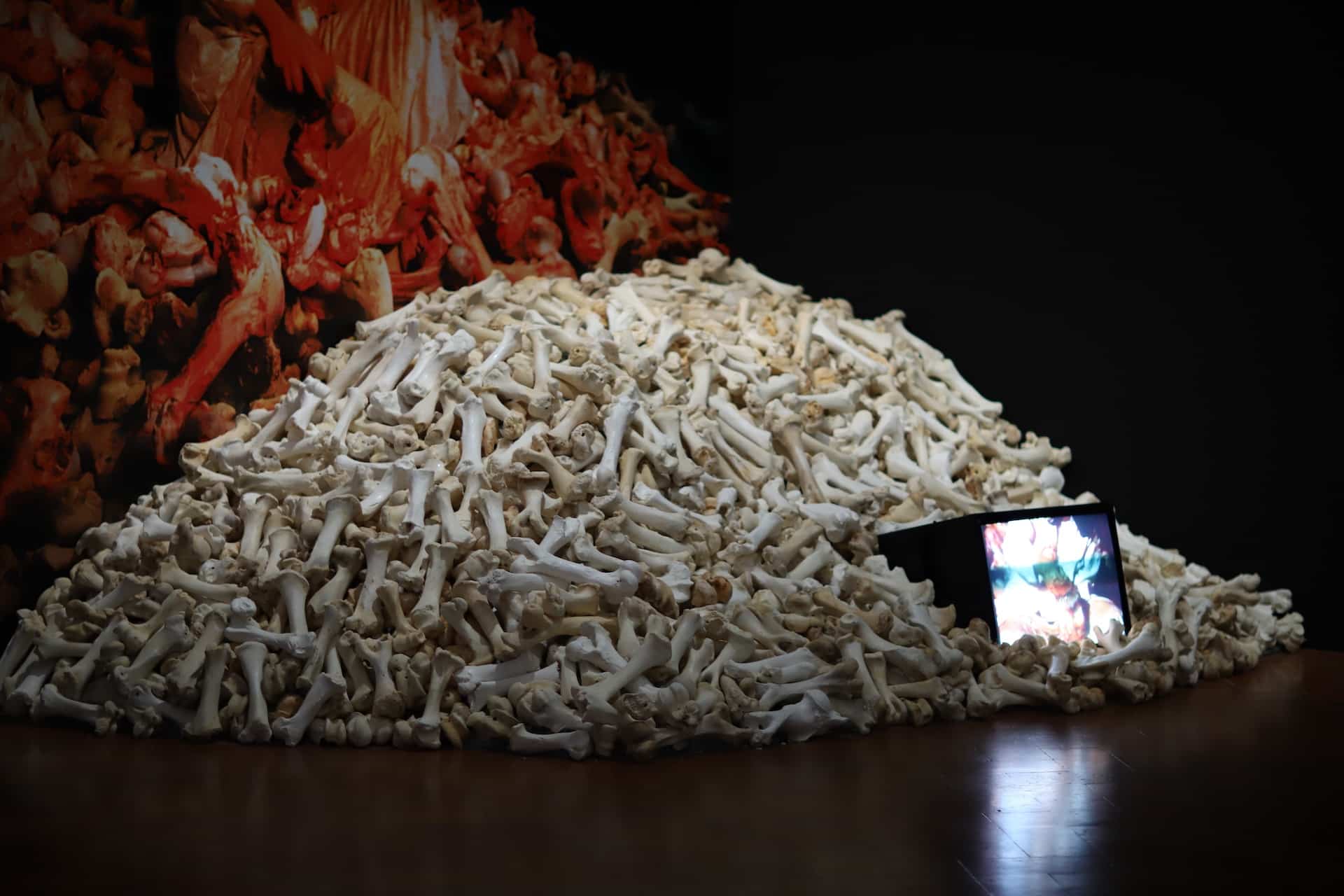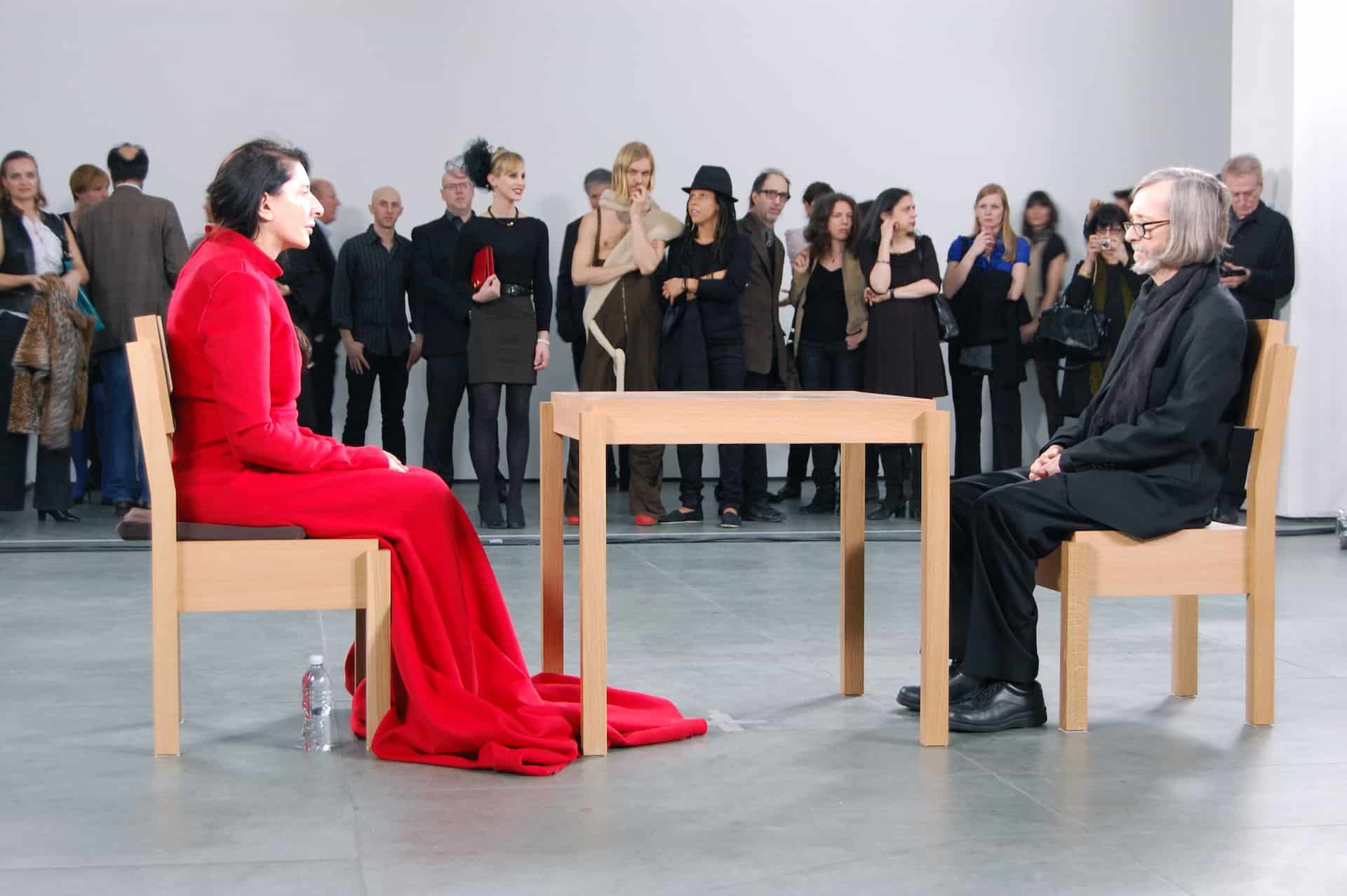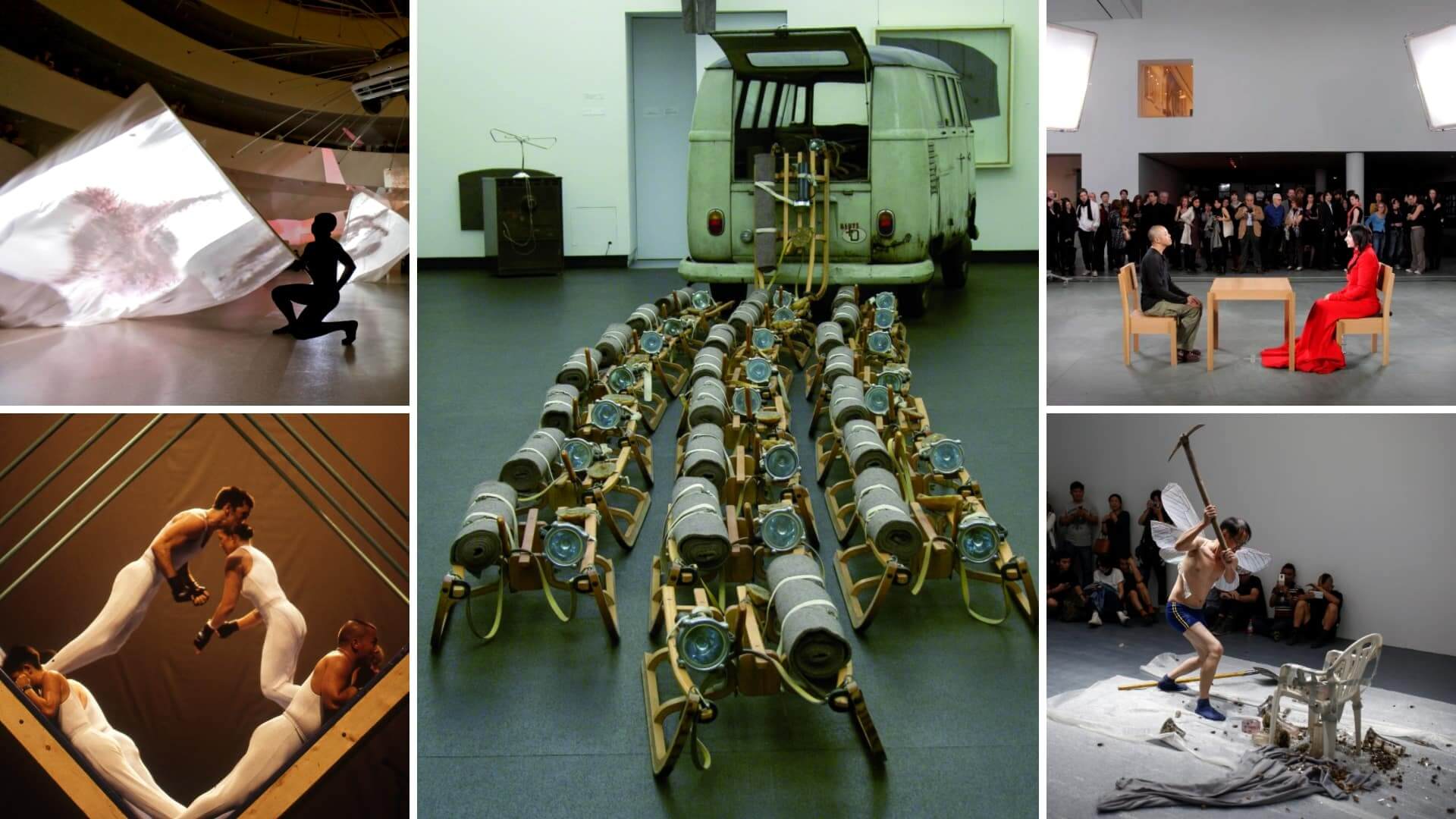Most art is made to be seen and experienced multiple times, sometimes at the pace of the viewer or appreciator. This means that, for most art, you can go somewhere and take it in for as long as you want. Performance art is not most art: it is something of the moment, something you can’t take with you, something that, at most, can be photographed and sometimes filmed. It exists as an often controversial form of art that, while avant garde in spirit, managed to reach the circles of fine art in its heyday. So what is performance art, what are some examples, and who are some of the notable names associated with it?
Performance Art Definition
Defining ‘Performance Art’
Here we will provide a definition for performance art, though it should be said early that a basic definition will be broad. This is because performance art can be hard to pin down, as it can encompass many acts, events, or pieces.
PERFORMANCE ART DEFINITION
What is performance art?
Performance art is an art piece, exhibition, or installation that is created directly by the artist, collection of artists, or others. Performance art is often seen as what’s done when other more traditional art forms are not enough to get the artist’s point across. It can include any number of actions by the artist that will be witnessed by others, with fluidity between the real and the art being a major focal point. While performance art has varied in its style and depiction, much of it can be confrontational and shocking in order to elicit reactions from those viewing it. In many ways, performance art pushes the boundaries of art by asking so much of the artist and asking the audience to decide what counts as art, especially in a “fine art” context.
Performance art characteristics include:
- Direct input by the artist in the performance.
- Using unusual tools and doing unusual things in order to perform the art piece.
- Shocking and startling in practice, which elicits a more visceral reaction from those watching the performance.
- Like most art, often done with a strong personal and/or political message in mind.
Performance Art History
Origins of Performance Art
Theatrical stylings can be seen as precursors to what we now call performance art, and we don’t mean plays or operas. In the early 20th century, taking inspiration from cabarets and detailing their manifestos in person, the art movements of Dadaism and Surrealism featured early versions of this style.
If not directly related, they surely inspired what would come afterward, especially since each of these art movements had a touch of the avant garde.
Much like how Pop Art rejected the then current art trend of Abstract Expressionism in the 1950s and ‘60s, performance art decided what was going on in the art world was not enough to fully express how the artists felt.
And while Pop Art intentionally looked outward for inspiration, performance art is all about the internal. Whether the canvas is a single person or within an art installation, performance art is all about expressing something through action (which is why this style is also known as “action art” or “artistic action”).
What is Performance Art • TATE Modern
During the height of the counterculture can be seen as performance art’s heyday, when some of the most famous performance artists (some of which we’ll cover in the next section) came out of.
These artists came from different places across the globe, and some were part of collectives (such as Fluxus) or studied at the same institutions (such as Black Mountain College). And as you’ll see, some of them still perform or have a presence in the 21st century.
Performance Art Examples
Performance Artists
There are many different performance artists who can each give a different performance art example, though we can’t possibly list each and every one (but this writer recommends you look up as much as you can if you’re interested).
It should also be said that contemporary performance art is still happening, to the point where it would not seem out of place in a gallery or museum the way it maybe used to be. So without further ado, we shall cover a few of history’s most notable performance artists.
Joseph Beuys
This German born artist made a few physical pieces of art, such as Homogeneous Infiltration for Grand Piano (1966) and The Pack (1969), but some of his most famous works were performative. These include How to Explain Pictures to a Dead Hare (1965), I Like America and America Likes Me (aka Coyote) (1974), and the collaborative 7000 Oaks – City Forestation Instead of City Administration (1982-1987).
What is Performance Art • J. Beuys
These works are rooted in symbolism and protest, especially Coyote, which had the artist protesting the US intervention into the Vietnam War (a common theme in ‘60s and ‘70s performance art) by staying in a New York City art gallery for three days with a coyote and never once touching US soil.
Yoko Ono
Easily the most famous performance artist alive for a few different reasons, Japan born Yoko Ono was part of the Fluxus community and was big on participant performance art. This meant that many of her artworks needed the participation of others in order to work.
One of her most famous performances is Cut Piece (1964), where audience members were asked to take scissors and remove her clothing piece by piece, with the artwork representing the sedation of and potential for violence against women.
Performance art definition • Cut Piece
More controversially, there is Voice Piece for Soprano, which was composed in 1961 but more recently performed in the 2010s at MoMA (Museum of Modern Art). This performance — which was done by Ono and gallery visitors — involves screaming short lyrics into a microphone through a loudspeaker that could be heard all over the museum.
What is Performance Art • Contemporary performance art
Chris Burden
When one thinks of performance art that threatens the livelihood of the artist, there are few examples better than American born Chris Burden.
There is his Master’s thesis at University of California, Irvine, Five Day Locker Piece (1971), where he remained stuffed in a student locker for five days; there is Shoot (1971), where a friend shot the artist with a .22 rifle in the arm (“I had an intuitive sense that being shot is as American as apple pie”).
There is arguably his most famous work, Trans-Fixed (1974), where the artist was crucified to a (running) VW Beetle; and then there is Doomed (1975), where the artist spent over 45 hours underneath a sheet of glass near a running clock before eventually getting up, smashing the clock, and ending the piece.
What is Performance Art • performance art definition • Chris Burden
Oh, and in 2011, he made a kinetic sculpture (made of Lincoln Logs and Legos, among other toys) named Metropolis II, a direct reference to the classic Fritz Lang German Expressionist film.
What is Performance Art • Metropolis II
Marina Abramović
An incredibly accomplished artist, Serbian born Abramović began her career in the 1970s, where (not unlike Chris Burden) several of her pieces put her in physical danger. Rhythm 10 (1973) involved her striking a knife in-between her fingers and Rhythm 0 (1974) involved participation from the audience to use seventy-two objects on her in any way they chose.
Performance art examples • Marina Ambramović
Not every one of her artworks put her in danger, but sometimes something innocuous was meant to raise awareness to something serious. Balkan Baroque (1997) is an example of this, wherein the artist washed bloody cow bones for days, which was meant to bring attention to the devastating effects of war, including the war of Bosnia.

What is Performance Art • Types of performance art
In the 21st century, the artist performed The House with the Ocean View (2002), which had her stay inside an art installation for several days as she did daily tasks such as sleep and shower.
The artist more recently performed The Artist Is Present (2010) at MoMA; the piece consists of two chairs and a table, where Abramović sat silently in one chair and anyone could sit in the chair across from her.

What is Performance Art • The Artist Is Present
Performance art can be seen as extreme by some, offensive by others, and outright dangerous by most. But it’s only by going to the limit that these artists were able to create conversations about art and society that others could sometimes only hint at. Performance art may not always be the most mainstream or accepted art form, but unlike some art movements, it has yet to disappear into the annals of art history.
UP NEXT
Explore More Styles and Movements
This was just one of many fascinating segments of art history. There are many eras, styles, artists, and movements to discover. Let's continue our study by choosing the next stop on your way to becoming an art aficionado. Below you can visit our Art Styles Index, our Art History Timeline, or choose an individual movement.
Share your vision with elegant shot lists and storyboards.
Create robust and customizable shot lists. Upload images to make storyboards and slideshows.
